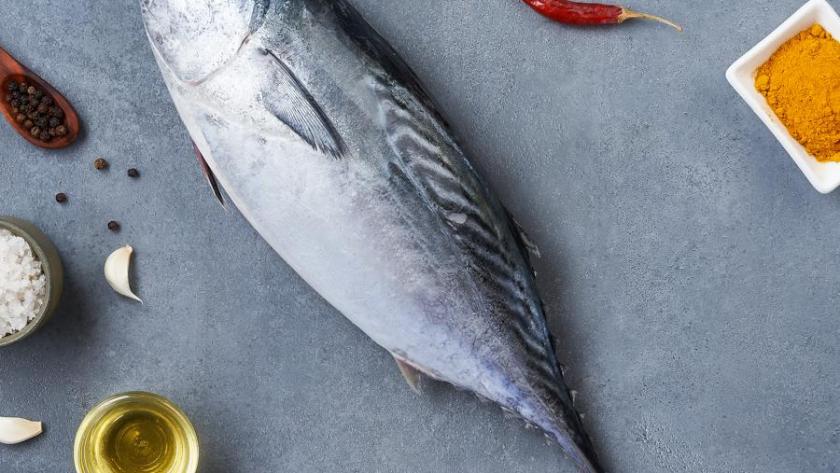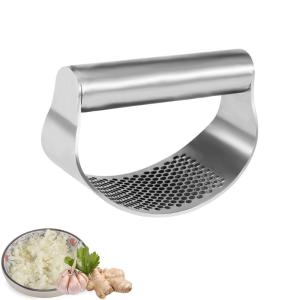Tuna is a blue fish with tender meats and an unmistakable flavor, a product of the sea consumed and appreciated in every corner of the globe and certainly not for no reason. We know better the properties and varieties of tuna, with some ideas to use it fresh or canned in delicious recipes.
Rich in mineral salts, omega-3, and vitamins, friend of the heart, and low in calories, tuna is undoubtedly among the most consumed fish products on the planet, so much so that the UN has dedicated a world day to it, on May 2nd. From Japan to the Atlantic coasts passing through the Italian traps of Sicily and Sardinia, tuna is an ingredient loved by everyone and declined in various ways in the kitchen.
With the generic term “tuna” we mean a group composed of different fish species, more or less valuable, belonging to the wider family of bluefish: fish caught or farmed that allow us to bring to the table delicious and tasty dishes. Let’s find out everything you need to know about this fish with extraordinary qualities: the benefits, the properties and the different varieties, with some advice to use it in the kitchen in genuine and delicious recipes.
Property
Tuna is a food with an interesting nutritional profile: relatively low in calories (100 grams of fresh tuna provide 159 kcal, calories that rise to almost 200 in the case of canned tuna) it is rich in mineral salts, in particular iron, phosphorus, selenium, calcium, sodium, and magnesium. Excellent source of saturated omega-3 fats, important for keeping blood cholesterol levels under control, but also of proteins of high biological value: for these reasons it falls into the category of nutritious and “lean” fish (with the exception of tuna belly, the only fatty portion). The presence of vitamins, especially vitamin A, is good, while the amounts of sugars, lipids, and carbohydrates are practically irrelevant.
Benefits
The nutritional profile of tuna leaves no doubt about the importance that this product can take in a healthy and balanced diet. If you still have doubts, you will be pleased to know that:
Tuna helps the development of muscle mass and facilitates the loss of excess fat thanks to the good protein intake;
The massive presence of omega-3 fats supports and helps the cardiovascular system because it helps to keep blood cholesterol levels low;
Omega-3s also have positive effects on mood, a function particularly useful in periods of strong stress and anxiety;
Phosphorus and potassium stimulate concentration and memory, while iron is useful in case of anemia; always thanks to the mineral salts, tuna protects and supports the development of bones.
Allergy To Fish
Fish are among the 9 most common food allergens. People who are allergic to fish react abnormally to their proteins. According to the Canadian Food Inspection Agency, it is possible that a person with an allergy to a given fish or seafood is also allergic to other species belonging to the same group. For example, a person allergic to tuna could also be allergic to pike since both are fish. On the other hand, a person allergic to one type of fish or seafood (crustacean or fish or mollusk) will not necessarily be allergic to other types. It is strongly recommended that people who are allergic to these foods consult an allergist before introducing new ones into their diet.
Sushi Fashion
In recent years, sushi fashion has exploded. Tuna is a fish regularly used in the manufacture of this Japanese dish. However, it should not be forgotten that raw, smoked, or pickled fish can contain bacteria, viruses, and even parasites that only cooking can destroy. It is therefore recommended that people who are more susceptible to poisonings, such as pregnant women, young children, and people with weakened immune systems, avoid consuming raw, smoked, or marinated fish.
Tuna, The Varieties That We Find In The Mediterranean Sea
It is one of the most fascinating inhabitants of our sea, as well as a valuable ingredient of our tables: we are talking about tuna. As the popular wisdom for pork says, even for tuna the saying applies that nothing is thrown away. Considering how valuable it is, especially bluefin tuna, to get the best out of this fish you absolutely need to know all its cuts – which are called stalls – and know how to treat them. Precautions that are essential even before, during fishing: to enjoy the maximum of the goodness of its meat, the tuna must in fact be caught without stressing it.
In the Mediterranean Sea, there are different varieties of tuna, all highly sought after but not all equally valuable. Let’s see together what they are and what characteristics they have, starting with the king of our seas, bluefin tuna.
Bluefin Tuna
When we talk about types of tuna, we cannot but start from the most requested and valuable one: bluefin tuna. Also called bluefin tuna, bluefin tuna is definitely the highest quality variety. It can be up to 3 meters long and weigh 600 kilos. In addition to the intense red color of its meat, it is also characterized by its half-moon tail.
Bluefin tuna is present in the Mediterranean Sea, but also in the Pacific and Atlantic Oceans. Despite these other families, however, among all the varieties of tuna, it is the one at greatest risk of extinction. In Japan, for example, there is great demand for it because it is a fundamental ingredient of traditional cuisine, while in the Mediterranean real farms have been born, such as the tuna farms.
Albacore, Or Albacore Tuna
Another variety of tuna present in the Mediterranean Sea and considered of great value is the alalunga. It is a very common type in the Pacific Ocean, but which we also find in our sea. Its name, alalunga, comes from the long saber-shaped pectoral fins. But it is also called white tuna, for the color of its flesh: white, with pink shades.
Compared to bluefin tuna, albacore is much smaller: it can reach a maximum length of one meter and weigh about 40 kilos. In addition, compared to the most valuable relative, albacore tuna has less fatty meat. And of the albacore eggs are appreciated.
Yellowfin Tuna
In the Mediterranean Sea, there has also been yellowfin tuna for some years. However, this variety is not as valuable as the long-wing one, although many often try to pass it off as such for the similar color of the meat: the value in the price lists is in fact lower. The name obviously derives from the yellow color that characterizes the tip of the fins and this is the type of tuna that we all know best because it is the one used by the industry for canning. Yellowfin tuna reaches a weight of about 40 kilos and the length exceeds one meter slightly.
Skipjack Tuna
The last variety to report is the skipjack tuna. Extremely widespread in the Mediterranean Sea and beyond, this type of tuna is the most fished in the world. The skipjack tuna is in fact widespread on a large scale for canned consumption. Considered a less valuable tuna than those we talked about earlier, in fact, it is also the cheapest, the skipjack tuna has a dark pinkish flesh: the consistency is tender and the taste is a little bitter. In our sea it is located off the coast of Sicily and near Lampedusa and is small, reaching a maximum of 3-4 kilograms.
Food lovers with a penchant for oriental cuisine will also know it because in Japan it is called katsuo, and smoked, dried, and cut into fine flakes is used to make katsuobushi, the fundamental ingredient of dashi, the fish broth with algae and mushrooms.
Natural Tuna And Oil Tuna: The Differences
When talking about tuna, the first thought inevitably goes to canned tuna or tuna in glass jars, known for its convenience, inimitable taste, and because it has long been present in our pantry. There are different types of canned tuna on the market, which differ in the variety of fish used and the method of preservation used. There are two main types of canned tuna: natural tuna and oil tuna. Let’s see their main features.
Natural tuna is thus defined because it is preserved, after cooking, in a brine of water and salt, without the addition of other ingredients. In contrast, tuna in oil, once cooked, is stored with olive oil, EVO oil or seed oil.
In both cases, these are natural products to which no artificial preservatives are added since oil and brine already perform this function. In addition, natural tuna and tuna oil confections, once filled and hermetically sealed, are thermally sterilized to ensure safe and healthy preservation.
How does it differ from fresh tuna? Thanks to modern preservation systems, the nutritional characteristics are almost similar: the canned one preserved in oil obviously has a greater caloric intake and a greater amount of protein. We are used to thinking of canned tuna as an ingredient that is certainly useful but also not very delicious: in reality, with a little attention to the choice, it is possible to find on the supermarket counters types of canned tuna of great quality, with which to prepare delicious dishes.
How Many Calories Does Canned Tuna Contain?
Let’s see together the nutritional values of 100 grams of drained tuna.
Canned tuna is characterized by the presence, on average, of 25 grams of proteins of high biological value, rich in amino acids. The fatty fraction can vary from 0.3 grams to 15 grams, depending on the method of preservation and the type of oil used. Both types of tuna contain a good percentage of essential fatty acids, including omega-3s. Minerals such as sodium, potassium, phosphorus and iron are not lacking, as well as micronutrients and essential vitamins such as B12 and B3.
Natural tuna and oil tuna do not contain carbohydrates and are therefore considered an excellent source of protein when preparing snacks, lunches or dinners.
The calories of natural tuna are about 100/150, while those of tuna in oil are about 200/250, and correspond, respectively, to 5% and less than 10% of the recommended daily caloric intake.
Everything You Need To Know To Buy Canned Tuna Safely
Choosing the products to buy at the supermarket is never easy. Being sure of the origin, processing, substances contained and quality requires a special eye. For products closed in packaging, the matter becomes even more difficult. Yet strategies can be used to better target the purchase more securely.
Among the products that can not be seen until after opening the package is tuna. For this reason, the indications contained on the packaging must be authentic. Recognizing, using, and evaluating them becomes essential for a conscious choice.
Preservation In Oil
This fish product, in addition to being one of the best sellers and loved in Italy, manages to maintain almost completely unchanged the nutritional values of fresh fish.
The conservation of tuna in oil has an ancient tradition (II century a.C.) That was born among the most important islands of the Mediterranean, North Africa, and Spain. Today this process allows having unaltered noble proteins of fish, phosphorus, potassium, vitamins, and omega3, in addition to marine iodine. Iodine, it is scientifically proven, helps in the proper functioning of the thyroid.
How To Choose Fresh Tuna
Choose it very fresh of course; its color varies according to the species, and nothing beats the wise advice of your fishmonger. No unpleasant surprises as to the amount of flesh, it hardly melts when cooked; it is a very advantageous fish and, not to spoil anything, it has very few bones. If all the pieces of this fish are equal from a taste point of view, the part that is between the flanks is, that said, thinner. Very popular, it is also more expensive.
How To Store Tuna?
Keep it for up to 24 hours in your refrigerator. Canned tuna can be kept without a limit of duration, but be aware that the oil tuna gains to age, its taste improving over the months. Consume it cooked. Very easy to prepare, it lends itself to uses as varied as delicious. The flesh of albacore tuna is similar to veal and can be eaten in the same way. The flesh of bluefin tuna, on the other hand, is similar to beef; it is also called the “steak of the sea”.
How To Cook And Taste Tuna?
Ocean fish is very popular on the plate, tuna recipes are available at will. While you prefer tuna in the form of salad, sushi or quiche, you will inevitably find your happiness in our gourmet recipes.
In steak or cobblestone, it can be marinated, braised or grilled, but be careful because its flesh dries out quickly. In order for it to retain all its flavor during a grill, cooking must be intensive and fast. It is also very tasty in papillote, casserole or pan, accompanied by tomatoes, onions and aromatic herbs with southern scents.
It is not surprising then that most of the dishes he mixes with are of Italian, Provençal and Basque origin. It is also the emblematic fish of Saint-Jean-de-Luz, where an annual festival is dedicated to it in July. On this occasion, why not feast on a “marmitako” - stew in an earthen cassolette - or a tuna belly pan-fried with green peppers and diced Bayonne ham?
Tuna is also ideal for exotic primers: Tahitians cook it with coconut milk and lime. Cold version, it is cooked in short broth and its flesh is incorporated into salads, macedonias, pasta. Crushed with fresh cream, it is transformed into rillettes of the sea. Raw, it is ideal consumed tartare or carpaccio, in the manner of beef. Star in Japan, it is used to make the most popular sushi and sashimi.
Canned tuna is used in the preparation of mixed salads, stuffed vegetables, appetizers… It is found preserved in natural, oil, tomato, marinade, ravigote or achards. Packaged whole, in pieces, in crumbs, it’s up to you.






